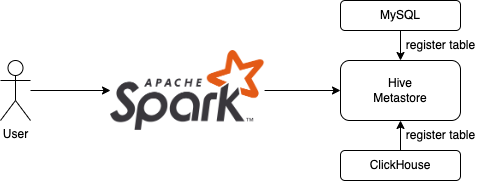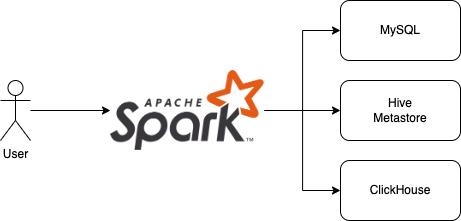Catalog Management
One important end user facing feature of DataSource V2 is supporting of multi-catalogs.
In the early stage of Spark, it does not have catalog concept, usually, user uses Hive Metastore or Glue to manage table metadata, hence user must register external DataSource tables in the centralized metastore before accessing.
In the centralized metastore model, a table is identified by <database>.<table>.

For example, register a MySQL table into metastore, then access it using Spark SQL.
CREATE TABLE <db>.<tbl>
USING org.apache.spark.sql.jdbc
OPTIONS (
url "jdbc:mysql://<mysql_host>:<mysql_port>",
dbtable "<mysql_db>.<mysql_tbl>",
user "<mysql_username>",
password "<mysql_password>"
);
SELECT * FROM <db>.<tbl>;
INSERT INTO <db>.<tbl> SELECT ...
Things changed in DataSource V2, starting from Spark 3.0, catalog concept is introduced to allow Spark to discover tables automatically by registering catalog plugins.
The default catalog has a fixed name spark_catalog, and typically, a table is identified by <catalog>.<database>.<table>.

For example, we can register a PostgreSQL database as Spark catalog named pg, and access it using Spark SQL.
# spark-defaults.conf
spark.sql.catalog.pg=org.apache.spark.sql.execution.datasources.v2.jdbc.JDBCTableCatalog
spark.sql.catalog.pg.url=jdbc:postgresql://<pg_host>:<pg_host>/<pg_db>
spark.sql.catalog.pg.driver=org.postgresql.Driver
spark.sql.catalog.pg.user=<pg_username>
spark.sql.catalog.pg.password=<pg_password>
SELECT * FROM pg.<db>.<tbl>;
INSERT INTO pg.<db>.<tbl> SELECT ...